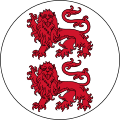| Governor of British Cyprus | |
|---|---|
 Badge of the governor of Cyprus | |
| Style | His Excellency |
| Residence | Government House |
| Appointer | Monarch of the United Kingdom |
| Precursor | High Commissioner of Cyprus |
| Formation | 10 March 1925 |
| First holder | Sir Malcolm Stevenson |
| Final holder | Sir Hugh Mackintosh Foot |
| Abolished | 16 August 1960 |
| Succession | President of Cyprus |


This article lists the colonial governors and administrators of British Cyprus .
Contents
- List of high commissioners (1878–1925)
- List of governors (1925–1960)
- Deputy governors
- See also
- References
Hitherto Ottoman Cyprus, a territory of the Ottoman Empire, a British protectorate under Ottoman suzerainty was established over Cyprus by the Cyprus Convention of 4 June 1878. The United Kingdom declared war on the Ottoman Empire on 5 November 1914 and annexed Cyprus. Turkey recognised British possession of Cyprus by the Treaty of Lausanne on 24 July 1923 and the island became a Crown Colony on 10 March 1925. Following the London and Zürich Agreements of 19 February 1959 Cyprus became an independent republic on 16 August 1960, and joined the Commonwealth of Nations in 1961.










